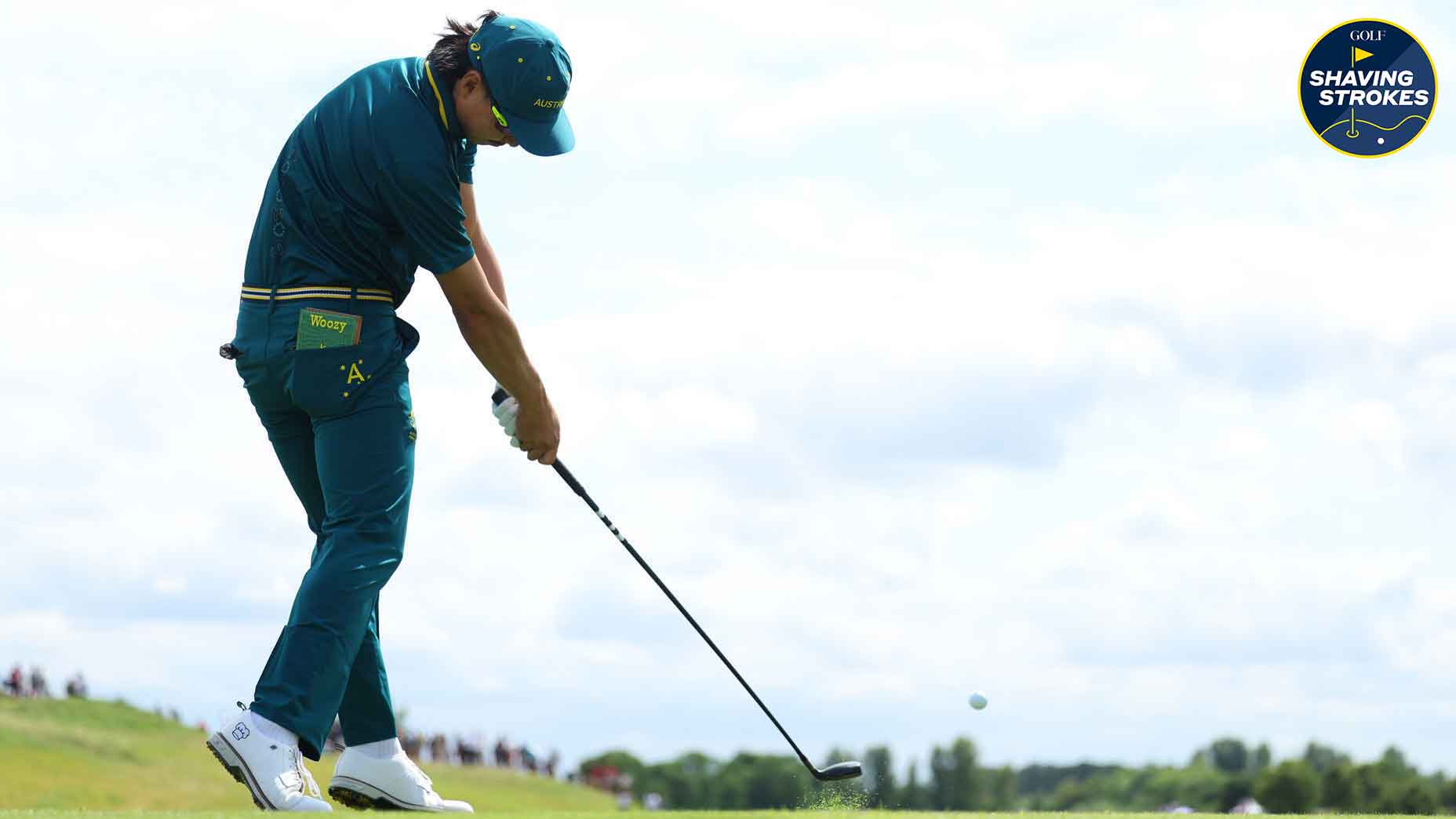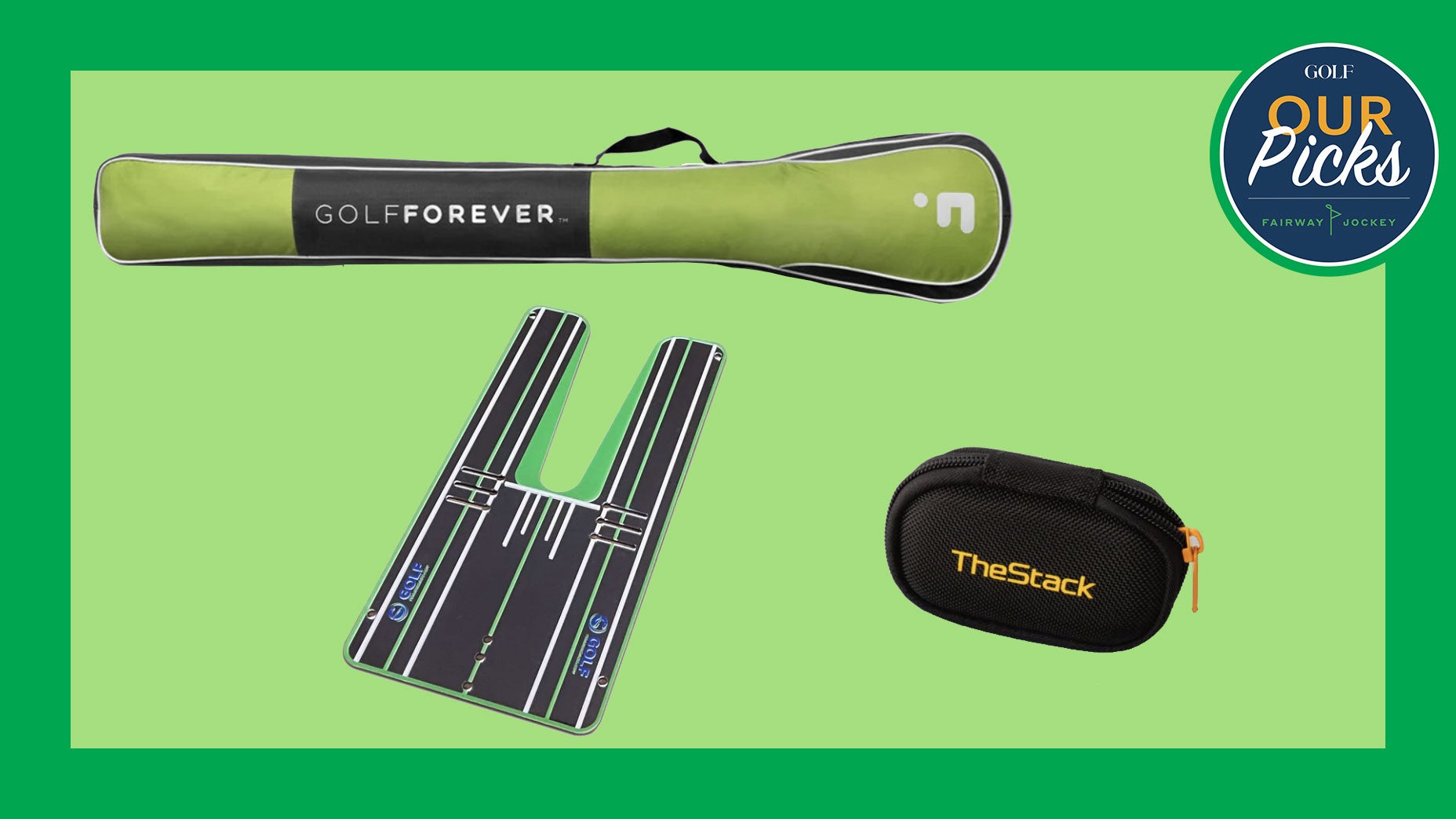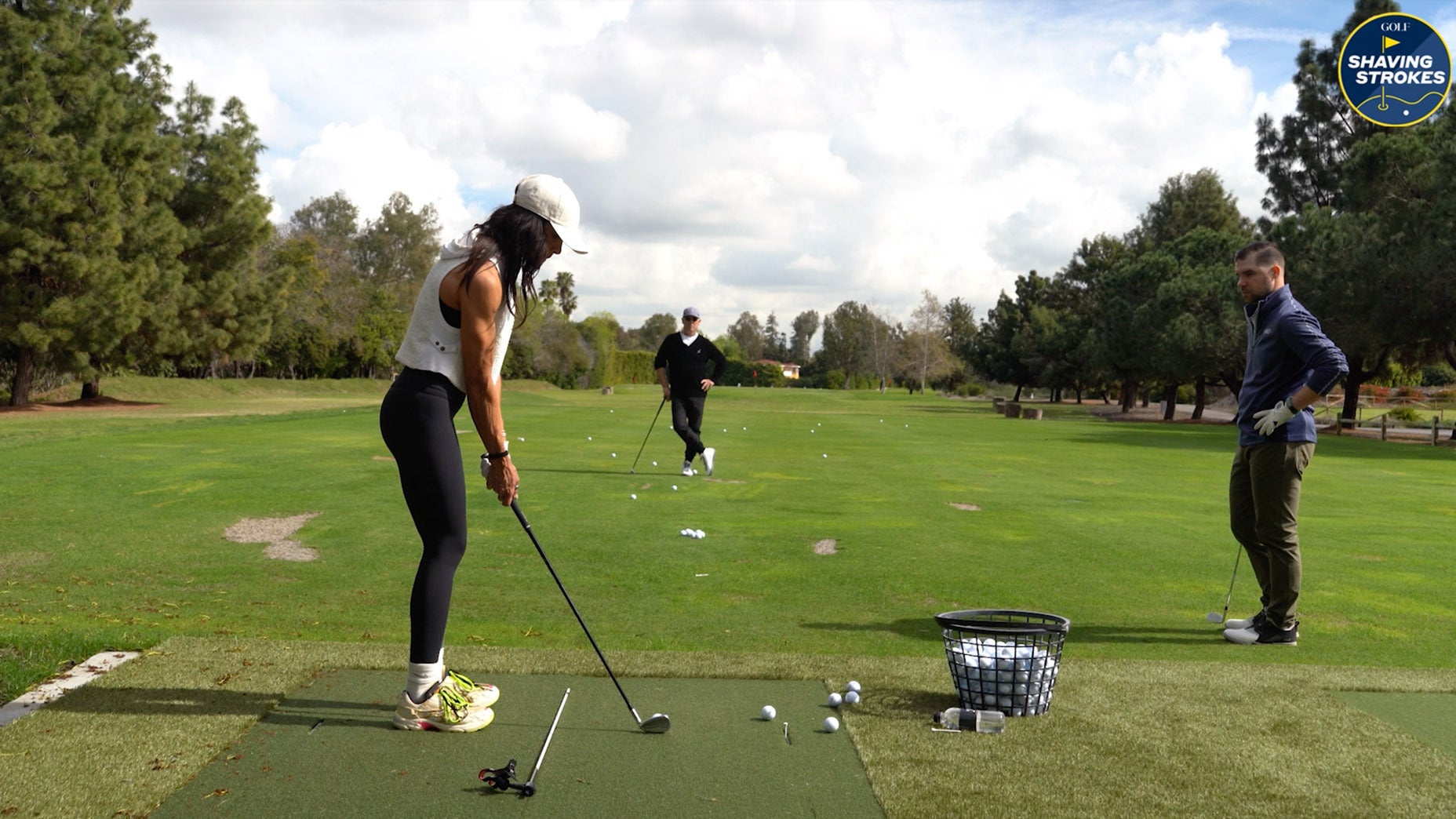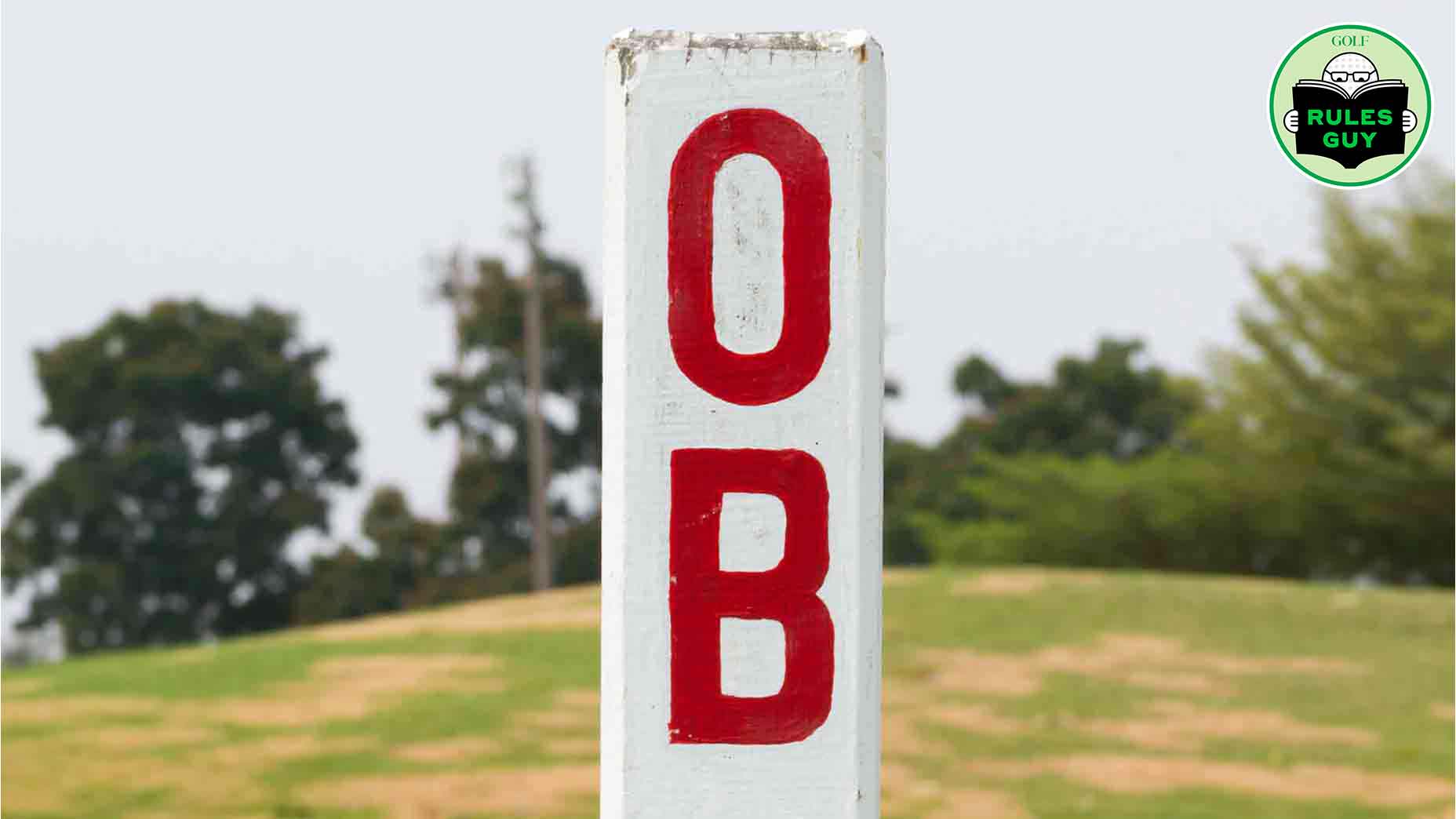Feeling a little iron deficient? I’ve been there. It took a lot of work—and two tries at Q-School—to get my iron game ready for the PGA Tour. I credit much of my success to my coach, John Tillery, who helped me fix some bad habits (yep, same as yours) by shoring up my takeaway, top position, delivery and impact—changes any player can make. The result is a more dynamic and consistent motion that holds up under any pressure.
GET TO A “PRESSURE-DOWN” TAKEAWAY: Point your right palm toward the ground and “pressure” your left thumb for a perfect, on-plane move.
Good iron players talk about “swinging in sequence”—that is, correctly blending lower- and upper-body motion on the way down from the top. This is spot-on but pretty technical. The problem? You can’t “make” a sequence. It only happens when your backswing fundamentals are in order.
For a long time, I was guilty of “picking up” the club instead of swinging it back. I see many weekend players do the same. This narrows your swing arc, robbing you of power, and stops you from pressuring the ground with your right foot. Without that pressure, you can’t shift weight to your front foot as you transition from backswing to downswing. Your “sequence” will be toast, and you’ll likely miss the green.
The fix was easy: As I moved the club away from the ball (photo, left), my coach John Tillery (see below) got me to keep my right palm facing the ground and to apply downward pressure to my left thumb with my right hand. You can do the same. Keep your hands low for as long as you can, letting your turn send the club up. The longer you maintain the pressure, the better—you’ll need it during the rest of your swing.
DO THIS! As seen below, push your right hand down on top of your left thumb as you swing the club back. You’ll create more width and set the stage for pure, laser-straight irons!

COACH’S TAKE with John Tillery. Think “Wide” at the Start: Kevin’s right. A sloppy takeaway leads to a sloppy swing. Applying downward pressure on the handle is an effective fix—it keeps you from picking up the club and makes it almost impossible to roll the club behind you (the start to an over-the-top swing). Try this drill for a terrific takeaway: Get into your golf posture without a club. Grab the back of your right wrist with your left hand, and make a mock backswing. If you correctly push your right hand down and away like Kevin, you’ll feel a stretch all the way into your left shoulder. That stretch is swing width and power.
GET TO A “STRUCTURED” TOP POSITION: Push the grip away from the target to load up for a massive strike.
My big miss used to be a push—or a push-slice, if I left the face open. Why? I allowed my hands to grip the club too softly and my wrists to “break” at the top. It felt fine, but it lacked structure, so the club fell off-plane (inset photo, below), causing me to be too steep through impact. The solution was similar to my takeaway fix: more right-hand pressure on the shaft (photo, left). Do it right and it feels like there’s less bend in your right arm, and that you’re pushing the grip away from the target. Another key is to squeeze the handle tighter with your right-hand fingers. Get this move down and a lot of good things happen.
DO THIS! As seen below, push your right hand against the shaft as you reach the top. It should feel like you’re thrusting the handle away from the target. Now you’re perfect.

DON’T DO THIS! As seen below, even with proper shoulder turn and a solid arm swing, failing to apply the right amount of pressure with your hands can send your club off-plane.

GET TO A “LOADED” DELIVERY POSITION: Stay low and turn less as you enter the hitting zone. It’s the secret key to pure strikes.
For years I felt like I needed to start my downswing by rotating my hips open to the target while “snapping” my left leg straight, and doing it ASAP! John showed me the light. These moves happen at impact, not before. If you rotate or post up too soon, the ball will shoot right. The lesson? Turn as you hit through the ball, not before.
First things first: Hold your top position for as long as possible. Then, halfway down, try to copy the image at right. Just moments from impact, everything is still very low, including the hands, knees and chest. There’s little spinning or lifting happening. The trick, again, is to maintain downward pressure. Continue pushing your right hand onto your left thumb and your left foot into the ground. Much as I do in my takeaway, I picture my right palm facing the turf, even this far into my downswing. If you’re a slicer, keep a copy of this picture in your bag or on your phone. Get to here and you’ll straighten out your curve.
DO THIS! As seen below, behold the power delivery! My “get-to” positions make it easy to achieve. You want to post up at impact, not before. Think “low body” to hit it like a Tour pro.

COACH’S TAKE with John Tillery. Dig In for a Draw: I love this picture. Kevin’s shifted into his left side but maintained considerable flex in his left knee. We call this “digging in.” It’s your new move for power draws. Here’s a trick: Get into your setup and swing the club back to waist height using your new right-hand pressure move. Without moving anything else, shift weight to your front foot by leaning slightly toward the target. I want you to really pressure the ground. You should look a lot like Kevin does here: Low, loaded and ready to make a big impact.
GET TO A “LOW-HANDS” IMPACT: Match your hand position at address and impact to crunch long, straight iron shots.
I have some insider information on how to hit solid irons—a secret handshake, of sorts, that good players know and rarely share. Since you’ve come this far, I’ll let you join the club. At impact, your hands should return to the same place they were at address—no lower (as in closer to your body) and no higher (as in farther away from your body). See for yourself in the photos below. My hand position is the same both in my setup and as I’m striking the ball. And take it from me—I striped this one!
Following my first three “get-to” moves will make this almost automatic, but matching hand positions is still a great image to keep in mind as you swing. The big mistake? Having your hands higher at impact than they were at address. That leads to swinging too far out to the right (push) or spinning your hips too soon (slice). Getting it right means you stayed “low” and pressured the shaft with your right hand from start to finish. Your reward? Towering irons that never leave the pin—and jealous buddies who ask, “How do you do it?”
DO THIS! As seen below, through impact, try to get your hands at the same height as they were at address. The lower they are through the hitting zone, the better your contact. High hands lead to pushed approaches.

A TURN FOR THE BEST, BONUS TIP! Pour on the hip rotation and you’ll never miss to the right again.
You’ve probably been told that to hit solid shots you have to work the club “to right field” and roll your wrists after impact. Well, I call B.S.! Every good iron player I know—and I know a lot—works the club “around” his body (as in left of the target line) post-impact, with the club releasing under the left shoulder (below).
Lower hands at impact will help, but you’ve got to do your part. As you strike the ball, pour on the hip turn. Notice how much more open my hips look here compared with the one on the opposite page. I’m turning like crazy! What holds everything together is that I waited to spin until I reached my get-to delivery position. As you rotate, keep your left arm and the grip close to your body. It may feel like you’re swinging too far to the left, but the ball will fly dead straight.








